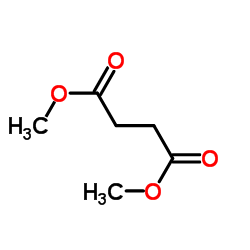Antimicrobial hydantoin-containing polyesters.
Licheng Tan, Samarendra Maji, Claudia Mattheis, Mengyao Zheng, Yiwang Chen, E Caballero-Díaz, Pilar Rivera Gil, Wolfgang J Parak, Andreas Greiner, Seema Agarwal
Index: Macromol. Biosci. 12(8) , 1068-76, (2012)
Full Text: HTML
Abstract
A new N-hydantoin-containing biocompatible and enzymatically degradable polyester with antibacterial properties is presented. Different polyesters of dimethyl succinate, 1,4-butanediol, and 3-[N,N-di(β-hydroxyethyl)aminoethyl]-5,5-dimethylhydantoin in varying molar ratios are prepared via two-step melt polycondensation. The antibacterially active N-halamine form is obtained by subsequent chlorination of the polyesters with sodium hypochlorite. Chemical structures, thermal properties, and spherulitic morphologies of the copolymers are studied adopting FT-IR, NMR, TGA, DSC, WAXD, and POM. The polyesters exhibit antibacterial activity against Escherichia coli. The adopted synthetic approach can be transferred to other polyesters in a straightforward manner.Copyright © 2012 WILEY-VCH Verlag GmbH & Co. KGaA, Weinheim.
Related Compounds
| Structure | Name/CAS No. | Molecular Formula | Articles |
|---|---|---|---|
 |
Dimethyl succinate
CAS:106-65-0 |
C6H10O4 |
|
Mesenchymal phenotype predisposes lung cancer cells to impai...
2014-01-01 [PLoS ONE 9(12) , e115144, (2014)] |
|
Process model and economic analysis of itaconic acid product...
2006-01-01 [Bioresour. Technol. 97(2) , 342-7, (2006)] |
|
Effects of the methyl esters of pyruvate, succinate and glut...
1996-03-01 [Pharmacol. Res. 33(3) , 191-4, (1996)] |
|
Stimulation of insulin release in vivo by the methyl esters ...
1997-01-01 [Adv. Exp. Med. Biol. 426 , 231-4, (1997)] |
|
Potentiation of the insulinotropic action of GLP-1 by succin...
2000-08-01 [Horm. Metab. Res. 32(8) , 306-9, (2000)] |